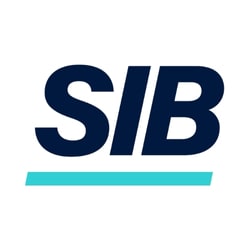Andrew Casey is CFO of digital adoption platform company WalkMe. Views are the author's own.
Digital transformation is here to stay. But is it delivering the value promised? If your organization isn’t getting as much out of new technology as you were expecting, the problem might stem from your adoption process.
Forbes reports that 84% of all digital transformation projects fail. When you consider that spending on digital technology is on track to reach $2.8 trillion in 2025, more than double 2020 spending, those failed projects can mean a lot of wasted time, money and effort.
The fact is, maximizing the value of your tools requires monitoring and reporting on their adoption and impact. But how do you gauge adoption? What KPIs and insights signal success – and how do you track them effectively to align business units and leaders around digital transformation strategies?
Based on our work with some 2,000 global client companies, here are a few thoughts on that.
Real-time analytics
With so many tools and dispersed teams, it’s easy for organizations to lose control over their digital environment. According to Gartner research, 60% of employers experience frustration with new software, and only 20% have access to a usage analytics dashboard. The two findings are connected: real-time analytics can help measure metrics to drive the adoption of digital technologies across the organization and ensure the investment is well spent.
Detailed analytics delivered via intuitive dashboards can help you understand software usage, and whether or not employees are using the tools effectively. Among the questions they can answer:
- Which solutions have been fully adopted and are moving the needle?
- What solutions are underused and could benefit from increased adoption?
- Where in an application are users getting confused or dropping off?
- Which tools have served their purpose and are no longer needed?
- What new tools will benefit the business most?
Data insights and analytics can be used to determine what makes users more productive, and why they abandon certain processes. It can give you a picture of where and why usage drops off – for example, when users leave fields blank or skip certain tasks.
It can also help you train employees to take advantage of features or complete tasks more efficiently.
Analytics can also be used to streamline software spend by uncovering unused licenses and redundant systems, or reveal tools that aren’t being used much at all, making them good candidates for phasing out.
With this knowledge, organizations can reduce friction during new technology rollouts while maximizing the value of existing investments.
Measurement in action
Forward-thinking companies are using digital adoption platforms (DAPs) to gather and track KPIs in order to determine the success of digital transformation initiatives. These rich data insights empower CFOs to make data-driven decisions about how to maximize technology investments, and ensure money spent on technology will serve the business well over the long term. More companies are realizing that a digital adoption strategy backed up by the right technology must go hand in hand with digital transformation ambitions.
One of the most important KPIs for measuring successful adoption is how quickly employees onboard and get up to speed on new software tools – in other words, “speed to proficiency.”
This will be evident by an employee’s ability to navigate the new application quickly and effectively.
For example, for CRM users, the timely nature of filling out customer information is critical. Sales reps who don’t fully understand how to use the system might not be able to complete those processes for lack of training and understanding. This could result in missing leads and setting up a pattern of new hires inefficiently working outside of their technology systems.
Data on these kinds of practices across an entire organization, encompassing dozens of software systems, gives you actionable insights for onboarding new hires more effectively, and ensuring employees are not underused. The result is accelerated adoption and greater employee efficiency and, ultimately, greater employee satisfaction.
Good leaders should always care about employee satisfaction, and it should therefore be measured like any other business metric.
The level of employee satisfaction with a new technology will be evident by gauging employee productivity, and by tracking a reduction in support tickets related to tool usage.
Other important adoption KPIs to track include user retention, time spent using an application and engagement with new features.
These metrics provide insight into how organizations can empower employees to leverage the full potential of an application, and extract the most value from their investment.
No adoption, no transformation
With the workplace environment still in flux and the constant introduction of new technologies, getting the most from your digital technology will continue to be a pressing issue. Without successful adoption, the potential for digital transformation to help your organization become more efficient and profitable cannot be realized.
To maximize the impact of their digital transformation, CFOs must accelerate digital adoption with the right technology tools. Only with these tools in place can CFOs monitor the right KPIs and have the means to glean actionable insights from adoption-related data.
Keep in mind that successful digital adoption doesn’t stop with tool usage – it pushes the limits of what your technology stack is capable of, helping you realize the full potential of your investments across the organization.





















